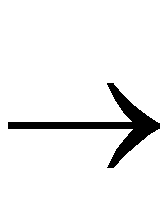FPGA Editor GuideChapter 5: Working with Physical Macros
Saving your Design as a Macro File
You can create a macro library file by saving your design as a macro. To use this macro, you must assign one or more external pins, as described in the “Adding External Pins” section.
Note: Constraints are not retained when you save your design file as a macro library file. A constraint file is not generated, even if your design had constraints defined.
With the Same Name
To save your current design as a macro with the same name, select File  Save As Macro. Your current design file is saved as a macro file with the same name as your design but with a .nmc extension.
Save As Macro. Your current design file is saved as a macro file with the same name as your design but with a .nmc extension.
With a Different Name
To save your design as a macro library file with a different name, use this procedure.
- Select File
 Save As to display the Save As dialog box, shown in the “Save As Dialog Box” figure of the “Menu Commands” chapter.
Save As to display the Save As dialog box, shown in the “Save As Dialog Box” figure of the “Menu Commands” chapter.
- Select the Macro option.
- Enter the macro name in the Macro File field with a .nmc extension.
You can save your macro under a directory other than the current working directory. Type in the path name of the target directory in the Macro File field, or use the browse button to select your target directory and specify your macro file name.
- Click OK.
The dialog box closes, and the macro file is saved with the name you specified. The file name in the Title Bar at the top of the FPGA Editor window changes to indicate that this new file is currently displayed in the window. When you later save or exit the file, it is saved to the new file name, not the original file name.
![]() Save As Macro. Your current design file is saved as a macro file with the same name as your design but with a .nmc extension.
Save As Macro. Your current design file is saved as a macro file with the same name as your design but with a .nmc extension.